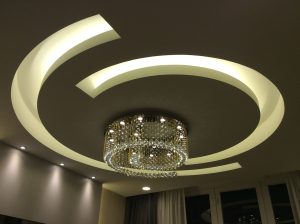Introduction
Light has always been an essential part of art. It highlights the work, creates a mood, and adds depth to the experience. In a gallery setting, lighting plays an even more crucial role. The right lighting can make all the difference in the way the artwork is perceived. Gallery light not only showcases the artwork but also creates an ambiance that enhances the visitor’s experience.
History of Gallery Lighting
Gallery light has come a long way over history. In the past, natural light was primarily used to illuminate the artwork. This posed several problems, including inconsistent lighting and damage to the artwork due to UV radiation. During the 20th century, advancements in technology led to the development of electric lighting, which allowed for more precise control of light intensity and placement. In recent years, LED technology has become increasingly popular in gallery lighting due to its energy efficiency, long lifespan, and ability to display colors accurately.
The Importance of Gallery Lighting
Gallery light plays a crucial role in how the artwork is perceived by visitors. It can highlight a particular piece, create a particular mood, or add depth to the experience. The right lighting can even make the artwork shine, making it a centerpiece of the exhibition. Equally important, the wrong lighting can detract from the artwork or even cause damage to it. Therefore, gallery lighting must be carefully considered and planned for each exhibition.
Types of Galleries
Different types of galleries require unique lighting solutions. Commercial galleries, for example, may use brighter lighting to make the artwork stand out and entice potential buyers. In contrast, museums and public galleries may use lower light levels to create a more relaxing and immersive experience for visitors. Additionally, certain types of artwork, such as sculptures, require specific lighting techniques to highlight their contours and shadows.
Gallery Lighting Techniques
Several different lighting techniques can be used to enhance the artwork on display. One common technique is wall washing, where light is directed at a wall with an artwork to create an even glow on the surface, highlighting the piece without creating any shadows or glare. Another popular technique is spotlighting, where specific pieces are illuminated to make them stand out. This technique can be used to guide the visitor’s gaze to a particular artwork or to create a focus on a specific aspect of the work that the curator wishes to highlight.
Gallery Lighting and Energy Conservation
Gallery lighting is often viewed as wasteful, as it requires high levels of energy consumption to keep the artworks illuminated. To address these concerns, many galleries have begun to adopt energy-efficient lighting solutions such as LED lighting. LED lighting consumes less energy, produces less heat, and has a longer lifespan than traditional incandescent or fluorescent lighting. In addition, galleries can further reduce their carbon footprint by using lighting controls and sensors, which automatically turn lights off when no one is present in the gallery area.





More Posts
Enhance Your Bathroom with a Ceramic Glazed Table Lamp
Enhance Your Outdoor Space with a Solar LED Table Lamp
Nordic-Inspired Wooden Table Lamp with Linen Lampshade